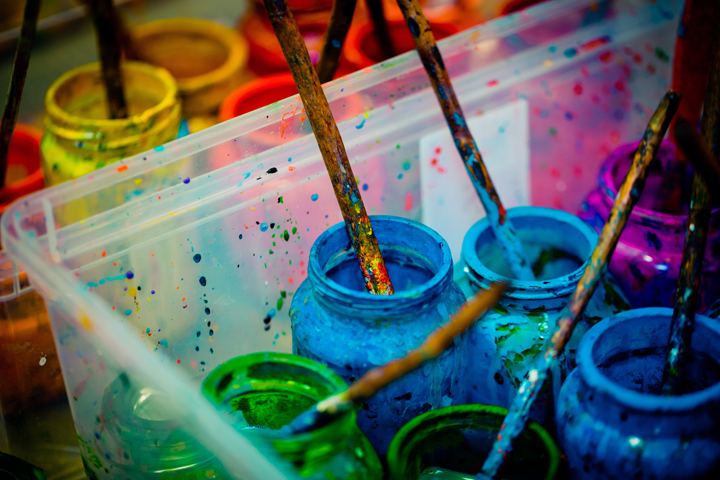Acrylic paint is one of the most versatile and popular types of paint nowadays. Many artists prefer to use acrylic paint as it’s fast-drying, reliable, and easy to use.
But what is acrylic paint exactly? And how does it work?
Acrylic paint is a little different from watercolor or oil paint, and it works in a unique way.
So, in this article, we’ll look at what acrylic paint is. I’ll explain the different components of this pattern and the science behind it. By the end of the article, you’ll have a good understanding of acrylic paint and feel more confident using it.
And if you’re looking for recommendations, check out my reviews of the best acrylic paint sets here!
What Kind of Paint is Acrylic?
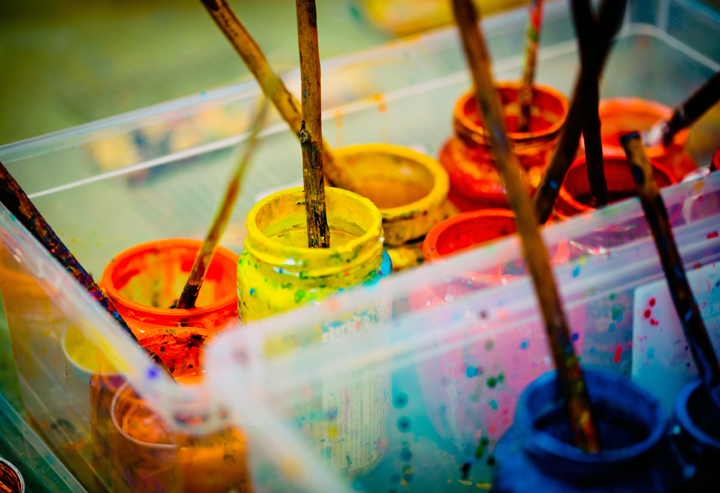
Acrylic paint is a water-based product made from pigments. It consists of an emulsion of acrylic polymer and uses a resin to bind the pigments within the paint.
You can use acrylic paint straight from the bottle or water it down if you prefer. So, that allows you to find the perfect consistency for your needs.
And notably, acrylic paint dries very quickly, which can be a positive or a negative factor. For example, beginners find it challenging to master painting with acrylics. That’s because the paint dries while they’re still adding details or blending colors.
So, it would be best if you learned to work fast when you use acrylics. But it’s a practical and vibrant paint that is well worth learning how to use.
Once acrylic paint dries, it’s waterproof. That makes it more durable and long-lasting as an art medium. But it also means you can’t easily make edits and adjustments once it’s dry.
How Does Acrylic Paint Work?
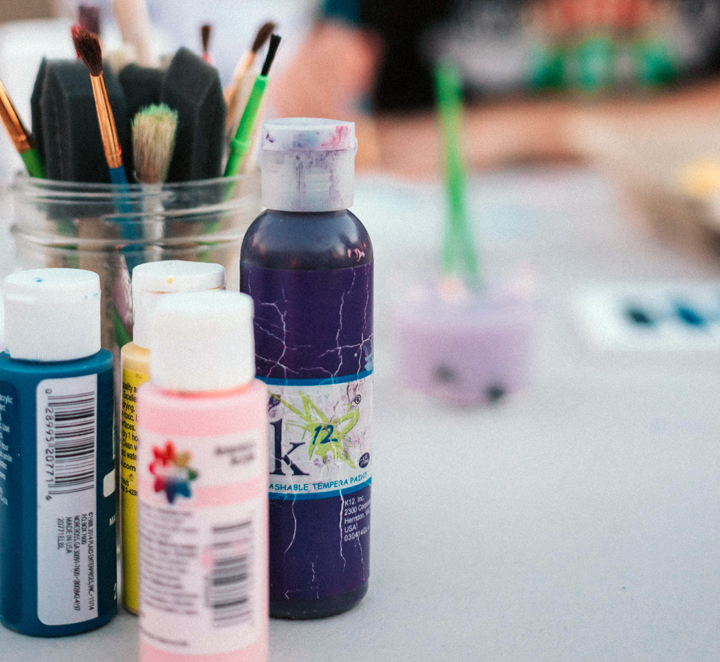
To understand acrylic pains, you need to know the three components that make up its formula. Acrylic paint has a vehicle, binder, and pigment.
Each of these components is essential to the science behind acrylic paint. So, let’s look at each one and what it does.
Vehicle in Acrylic Paint
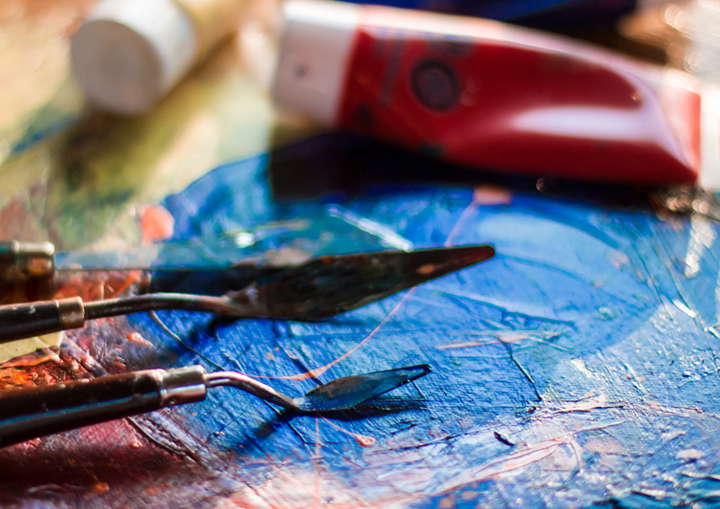
You could consider this the least important part of the formula – but it also plays a vital role. It’s what makes up the bulk of the paint substance. So, without the vehicle, you wouldn’t have anything to mix with the binder and pigment.
Often, the vehicle will be water – at least for water-based acrylic paints. We add the pigment and binder to the vehicle, making an emulsion you can use to paint.
Then, when you apply the paint to a surface, the vehicle quickly evaporates, but the pigment doesn’t. And as a result, you get a layer of paint on your canvas.
Binder in Acrylic Paint

Every type of acrylic paint contains a binder of acrylic polymer. This binder is an essential part of acrylic paint, and here’s why.
As mentioned above, the vehicle evaporates when applied to a surface. When this happens, it leaves the pigment behind. But it’s the binder that ensures the pigment doesn’t evaporate with the water.
Instead, the binder captures the pigment, creating a layer on the surface of your canvas. So, without the binder, you would be left with nothing to see.
The second purpose of the binder is to create a waterproof film over the paint once it dries.
Pigment in Acrylic Paint
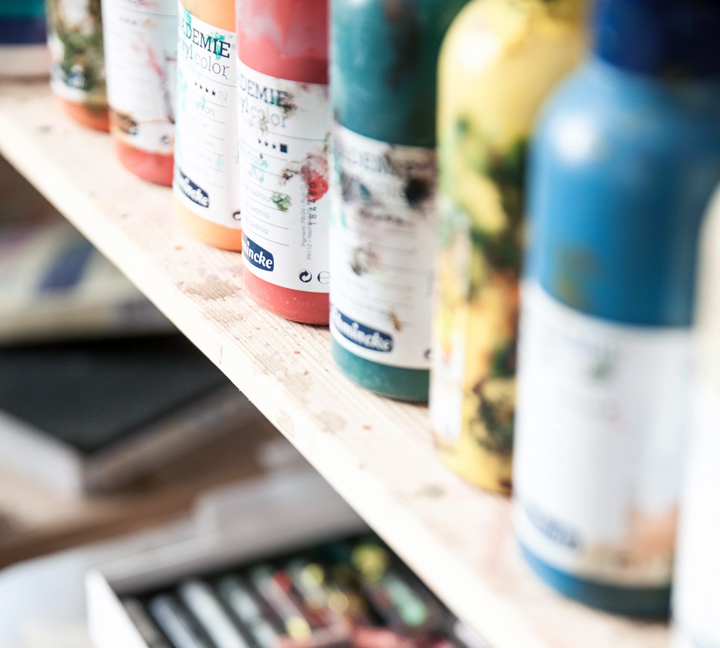
The pigment is what gives acrylic paint its vivid color. Pigments are made from solids ground down into tiny pigments. These brightly colored pigments don’t dissolve, instead becoming suspended in the paint.
There are many sources of pigments used in acrylic paints. For example, some are synthetic, while others are natural and organic.
The Science of Acrylic Paint

So far, you know what makes up acrylic paint and how these components work together. But there are some other vital processes involved in acrylic painting.
Stay with me, even if you’re a little intimidated by all the scientific terms. It’s not as complicated as it seems, but it’s important to understand how acrylic paint works.
I’ve broken it down into simple steps to explain the science of acrylic paint.
Applying Acrylic Paint
First, you need to apply your paint to your chosen surface. The good thing about acrylic paint is that it comes ready to use straight from the tube.
As explained, it already has the perfect formula of vehicle, binder, and pigments. However, you can water it down if you prefer using runnier paints.
So, take a little acrylic paint on your brush and apply it to the surface. If this is your first time using acrylic paint, it’s best to experiment with it first. That will help you understand how it works (and you won’t mess up that new canvas!).
The Evaporation Process
Very soon after you apply acrylic paint to a surface, it will start to evaporate. That’s because you’ve created a chemical reaction (even if you didn’t realize it!).
Once the pigments come into contact with the air, they bind together. Until now, the water vehicle prevented the pigment particles from fusing together.
But when exposed to the air, the water will evaporate, allowing the binding process to happen. And so, the paint will begin to dry.
Alterrnatively, the water may get absorbed by the surface instead of evaporating. Either way, the water content disappears, causing the pigments to bind together.
The Setting Process
When this happens, the paint will start to set. During this process, the binder traps the pigment to stop it from evaporating with the water.
The binder reacts with the pigments on a particle level to create a hexagonal structure. But what you’ll see is the paint developing a waterproof, hard film with a vivid color.
When Was Acrylic Paint Created?’
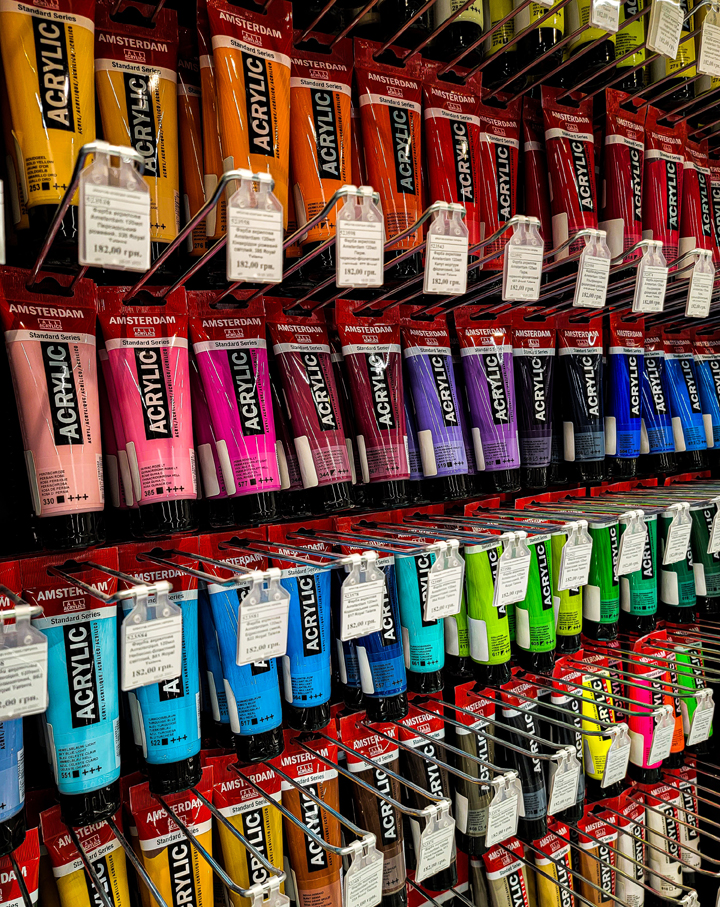
Acrylic paint was first created in the 1930s in Germany. The formula of acrylic resin, water, and pigment was brand new and exciting at the time. It had some of the characteristics of watercolor and oil paints. But it was unlike anything else on the market.
What was special about this new formula was how vivid, easy, and reliable it was. The paint dried fast, but you could also water it down to your desired thickness.
Acrylic paint wasn’t widely available at first. And interestingly, it was first marketed as house paint rather than for fine art.
But acrylic paint became more commonplace in the art world in the 1950s. The art company Liquitex developed a water-based acrylic paint that was readily available. So, artists from professionals to amateurs began to adopt this medium.
Notable early champions of acrylic paint include artists like David Hockney. During the 60s, acrylic paint was Hockney’s medium of choice for many of his famous pieces.
And since this time, acrylic paint has continued to grow in popularity.
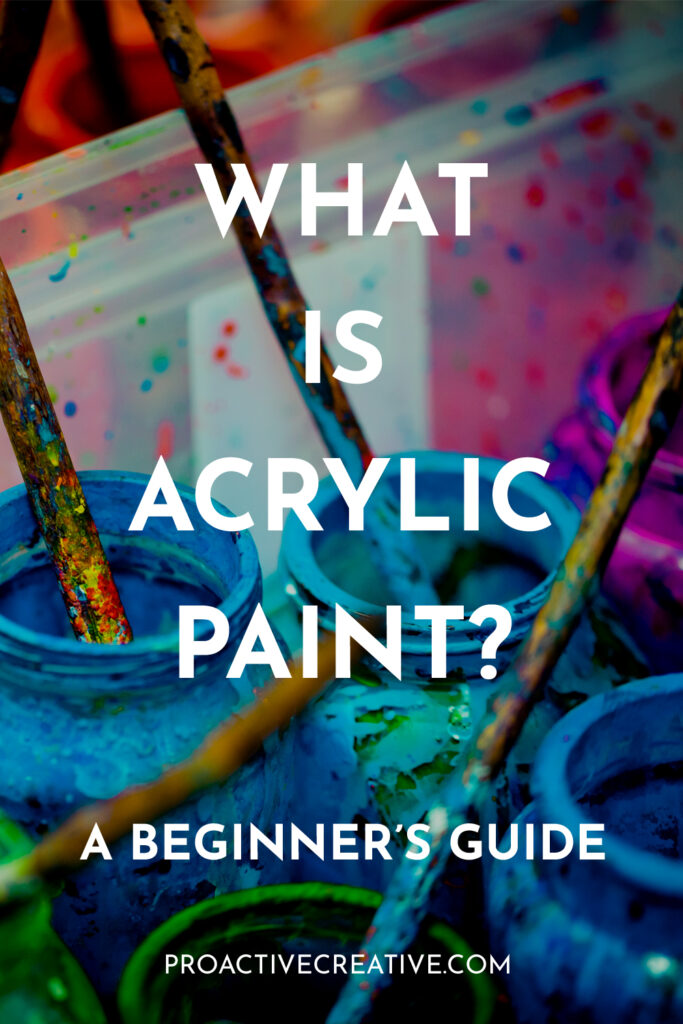
The Wrap Up
So there you have a detailed guide to acrylic paint. By now, you know the origins of acrylic paint and the science behind it. Plus, you’ll have a good idea of how it works and how you can use it in your artwork.
But the best way to learn how to use acrylic paint is to experiment with it! So, grab a set of acrylic paints and start painting.
In my opinion, every artist should give acrylic paints a go! They’re so versatile, and you can use them for all sorts of artwork and techniques. Plus, they’re non-toxic and safe to use. You can even combine acrylic paints with different mediums to change how they react.
So, what are you waiting for?! Let me know how you get on in the comments below! Feel free to ask any other questions about acrylic paint there too.
And follow us on Pinterest for more creative inspiration, tips, and reviews!

